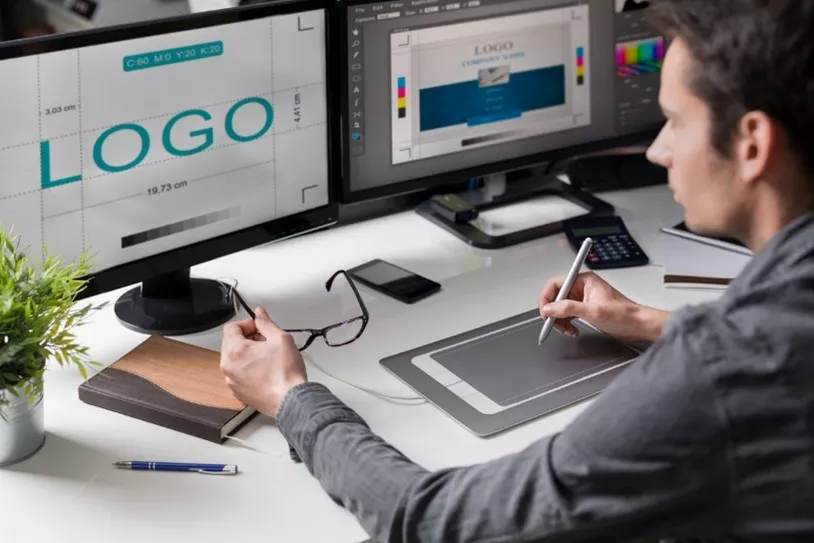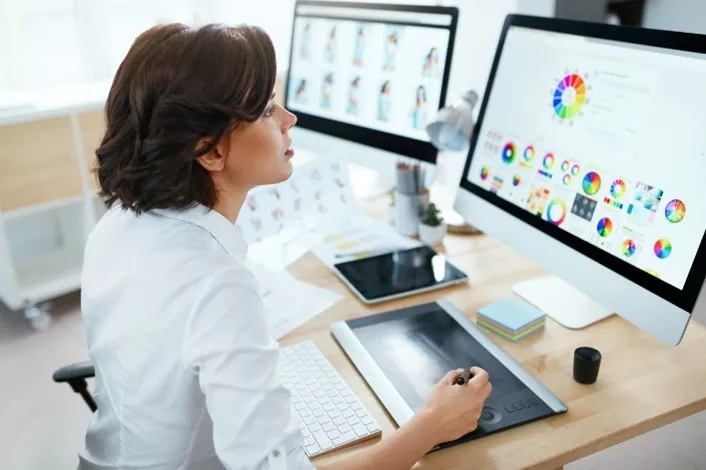What is Graphic Design? | 8 Types of Digital Design
In today’s visual-driven world, Graphic Design is crucial for shaping our experience with brands and technology. It blends art with strategy, transforming ideas into compelling visuals that communicate meaning. Beyond aesthetics, graphic design ensures functionality—whether guiding users on a website, storytelling through animations, or creating memorable brand identities. Curious about this dynamic field? Let’s explore the essential aspects of graphic design and the eight key types of digital design.
What is Graphic Design?

Graphic design is all about using visuals—like images, typography, and color—to communicate messages and solve problems. Designers use their creativity to craft visuals that serve a purpose, whether it’s building a brand, informing an audience, or enhancing user experiences. It’s a craft that combines artistic flair with technical skill, creating visual content that stands out while delivering a clear message.
Graphic designers don’t work in isolation—they collaborate with clients, marketers, developers, and product teams to ensure that their designs align with broader goals. Whether they’re working on a website, a logo, or a product package, graphic designers focus on creating visuals that are not only visually stunning but also highly functional.
8 Types of Graphic Design
Graphic design is a versatile field, with many different specializations. Let’s take a look at eight key types of digital design:
- Web Design - Creates visually appealing, user-friendly websites, working with developers.
- UI/UX Design - UI focuses on look; UX ensures ease of use for digital products.
- Animation Design - Brings visuals to life with video, motion graphics, or GIFs.
- Product Design - Designs functional, aesthetically pleasing physical or digital products.
- Brand Identity Design - Builds visual elements like logos and colors to represent brands.
- Advertising Design - Creates eye-catching ads across media to convey brand messages.
- Packaging Design - Designs packaging that protects, stands out, and reflects brand identity.
- Editorial Design - Arranges text and images in publications for an engaging layout.
The Evolution of Graphic Design in the Digital World
Graphic design has come a long way, especially with the advent of digital tools and technologies. Where designers once relied solely on pen and paper, they now have access to powerful software that allows for endless creativity. The digital era has not only expanded the scope of design but also made it more accessible. Tools like Adobe Creative Suite and AI-driven design platforms have empowered designers to push boundaries and explore new possibilities.
At the same time, modern design is more dynamic and interactive than ever before. Designers are expected to create experiences that adapt to different devices, from smartphones to large screens, and to incorporate elements like animations and interactivity into their designs. This shift has transformed graphic design from static visuals into something that’s living, breathing, and constantly evolving.

Graphic design is no longer just a way to create pretty pictures—it’s a strategic tool that businesses and individuals use to communicate, engage, and inspire. Whether you’re crafting a brand, designing a product, or creating an interactive digital experience, graphic design allows you to tell powerful visual stories.




